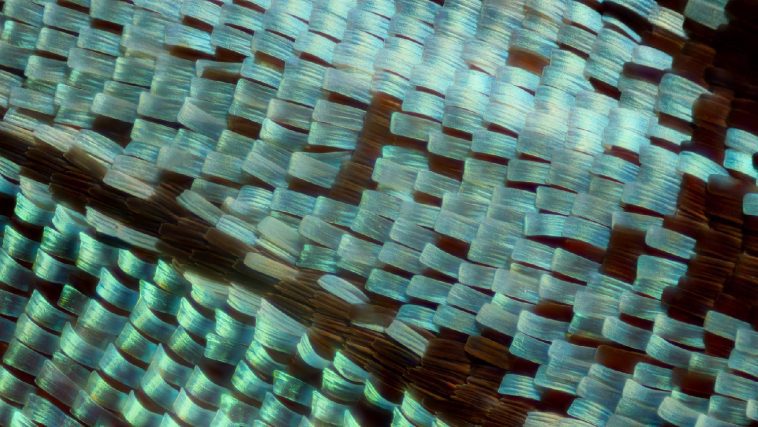[I was alerted to this report by Karl Priest, long-time Creation Club contributor.]
Butterflies are endlessly fascinating. We love them as little children, we learn about them in elementary school, and scientists study them to steal their world-class designs.
One of the first things we learn about these delicate creatures is that we must not mess with their wings because they are covered in tiny scales that can get brushed off if we mess with them. These microscopic shingles number in the tens of thousands on a single wing and serve a number of purposes for the butterfly.
- We delight in the blue of a Morpho’s wings—it’s the scales that reflect only that brilliant hue.
- Many butterflies (and moths) have intricate color patterns that both camouflage and misdirect built into their scales, leaving predators with the impression they aren’t there, or if they are, they’re too big and scary to mess with.
- These scales repel rain and dirt,
- and help make flight possible.
Butterfly wings control many of their attributes by precisely forming the structural architecture of their wing scales. This strategy might be used, for example, to give both color and self-cleaning properties to automobiles and buildings. Now we can learn from butterflies’ structural control of these complex, micro-nanostructured materials. ~Anthony McDougal, a research assistant in MIT’s Department of Mechanical Engineering
Engineers dearly want to mimic these beneficial characteristics. But, as you can see in the microscopic image above, these scales have distinct shapes and patterns to produce the needed effects. If engineers are going to get similar results, they’ll have to build similar designs.
How does a developing butterfly form these intricate shapes?
That’s the question a team from MIT (Massachusetts Institute of Technology) decided to tackle. They used a lot of tiny and carefully designed equipment and put a lot of thought into how they could observe the growing scales without damaging them in the process.
There have been a few surprises in the new information collected from watching this process in real time, such as how the ridges on a scale form. But the big takeaway is just the sheer complexity and brilliance of both the result and the living process itself.
Sadly, the research team gives zero credit to the butterfly’s Creator God for his design genius, but it is interesting to note that they didn’t give any to mindless, random chance (aka evolution) either.
I invite you to read the entire press release to spend a delightful minute reveling in awe at our real Creator God, who cares about even the smallest of his creatures and has filled us with the wisdom we need just to observe his skill in action.






